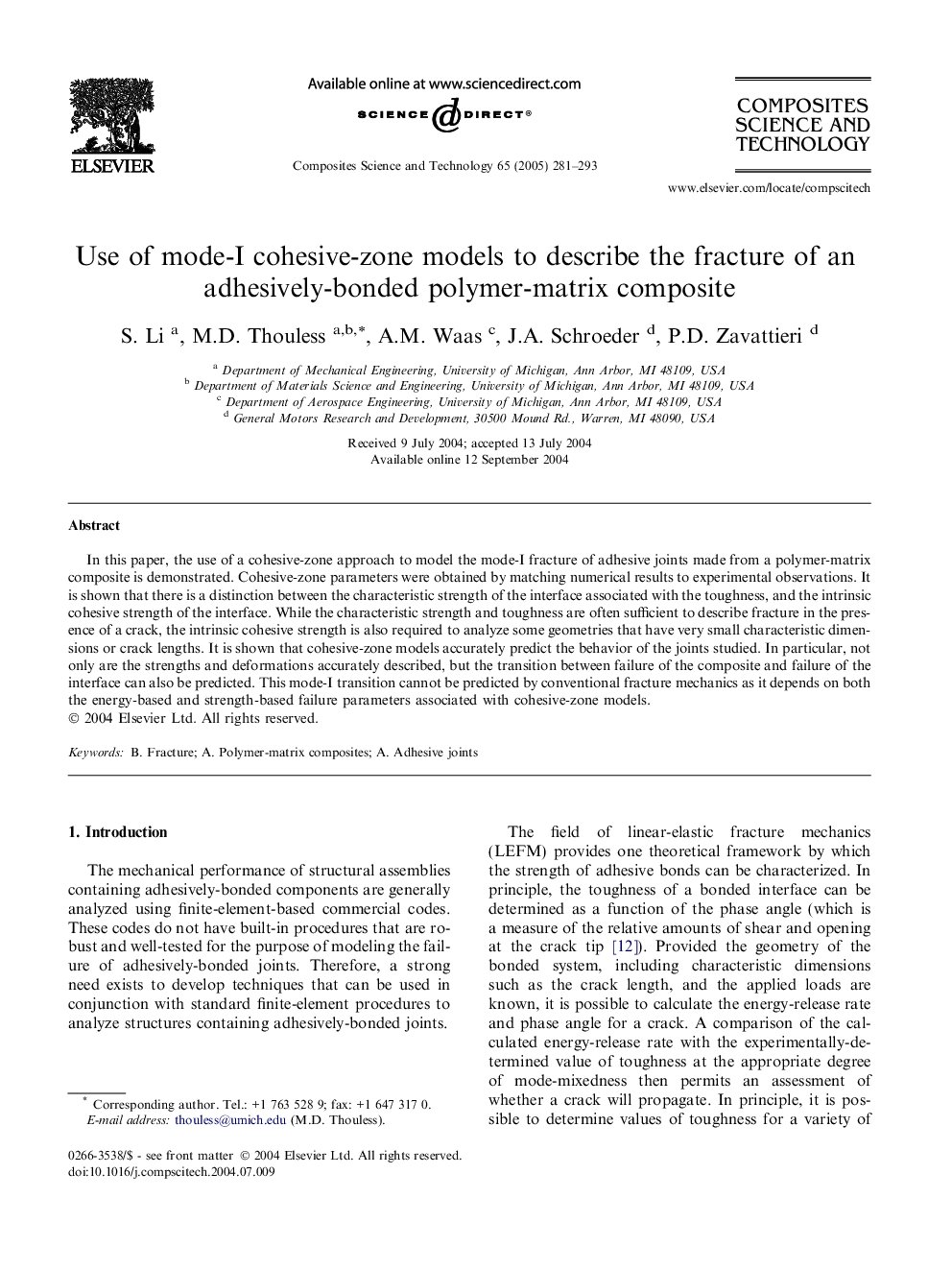| Article ID | Journal | Published Year | Pages | File Type |
|---|---|---|---|---|
| 10425564 | Composites Science and Technology | 2005 | 13 Pages |
Abstract
In this paper, the use of a cohesive-zone approach to model the mode-I fracture of adhesive joints made from a polymer-matrix composite is demonstrated. Cohesive-zone parameters were obtained by matching numerical results to experimental observations. It is shown that there is a distinction between the characteristic strength of the interface associated with the toughness, and the intrinsic cohesive strength of the interface. While the characteristic strength and toughness are often sufficient to describe fracture in the presence of a crack, the intrinsic cohesive strength is also required to analyze some geometries that have very small characteristic dimensions or crack lengths. It is shown that cohesive-zone models accurately predict the behavior of the joints studied. In particular, not only are the strengths and deformations accurately described, but the transition between failure of the composite and failure of the interface can also be predicted. This mode-I transition cannot be predicted by conventional fracture mechanics as it depends on both the energy-based and strength-based failure parameters associated with cohesive-zone models.
Related Topics
Physical Sciences and Engineering
Engineering
Engineering (General)
Authors
S. Li, M.D. Thouless, A.M. Waas, J.A. Schroeder, P.D. Zavattieri,
